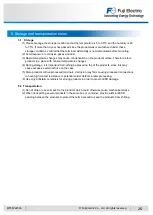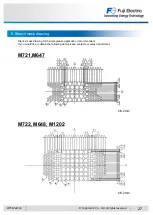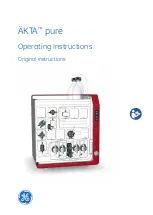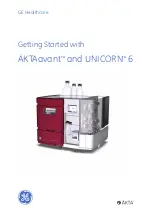
MT5F22233b
3. Mounting to heat sink
21
© Fuji Electric Co., Ltd. All rights reserved.
3-1. Surface conditions of heat sink
Design the heat sink so that the following surface conditions are satisfied. If the roughness and
flatness do not satisfy the conditions, it may cause an increase in contact thermal resistance, or
insulation failure due to package cracking.
1. The surface roughness(
R
z
) of
the heat sink should be 10μm or less.
2. The surface flatness of the heat sink should be
50μm or less in absolute value per 100mm,
taking the straight line connecting the center points of the two screw mounting holes as
reference. Here, "+" (plus) is defined when the heat sink has a convex shape, and "-" (minus) is
defined when the heat sink has a concave shape. If both shapes exist, the sum of the absolute
values of the maximum and minimum values should be 50μm or less.
* The flatness must satisfy the above value within the entire module mounting area including the
two screw clamps.
Fig.11 shows the definition of surface roughness and flatness of the heat sink.
Fig.11 Heat sink surface flatness and roughness
(Heat sink)
P=100mm pitch
+50μm
The surface flatness should be 50μm or less per 100mm, taking the straight line
connecting the center points of the two screw mounting holes as reference.
(a) In the case of convex shape
P=100mm pitch
-
50μm
(b) In the case of concave shape
P=100mm pitch
(c) In the case of both shapes exist
50μm
(Heat sink)
(Heat sink)
Thermal grease
application surface
Thermal grease
application surface
Thermal grease
application surface
The surface roughness
(
R
z
) should be 10μm or
less. Refer to ISO4287
for definition.
R
z








































